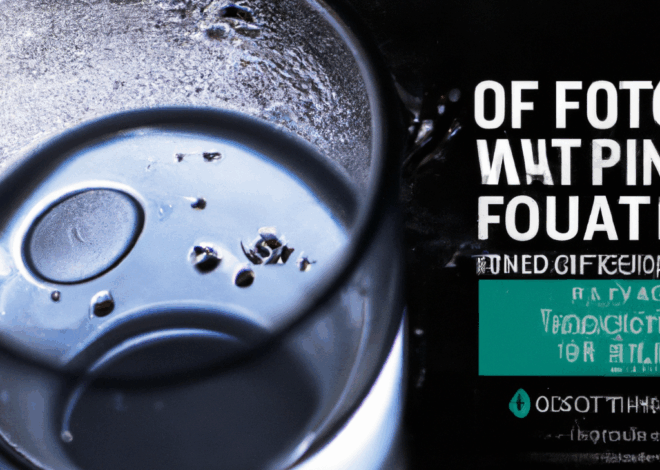
5. trinkwasserqualität
**Summary:** The quality of drinking water is essential for public health and safety. This article explores the factors affecting drinking water quality, its importance, and current challenges.
**Excerpt:** Discover the essential factors influencing drinking water quality and the challenges faced in ensuring safe drinking water for communities.
—
### 5. Trinkwasserqualität: Ensuring Safe Water for Communities
Drinking water quality is a critical aspect of public health, influencing the well-being of millions around the globe. Safe and clean drinking water is essential for preventing waterborne diseases and ensuring overall health. Various factors contribute to drinking water quality, including source water, treatment processes, distribution systems, and regulatory standards.
#### Sources of Drinking Water
Drinking water can originate from a variety of sources, including surface water (rivers, lakes, and reservoirs) and groundwater (aquifers). The quality of water from these sources can vary significantly based on environmental conditions, human activities, and geographical factors. Surface water is often more susceptible to contamination from agricultural runoff, industrial discharges, and urban pollution. Groundwater, while generally protected by soil and rock layers, can still be compromised by nearby land-use practices, such as the application of fertilizers and pesticides.
#### Treatment Processes
To ensure that water is safe for consumption, it undergoes various treatment processes before reaching households. These processes typically include coagulation, sedimentation, filtration, and disinfection. Coagulation involves adding chemicals to water to bind contaminants into larger particles, which can then be removed. Sedimentation allows these particles to settle at the bottom of treatment tanks. Filtration is the process of passing water through materials that trap remaining impurities, and disinfection, often using chlorine or ultraviolet light, eliminates harmful microorganisms.
Despite these rigorous treatment protocols, the effectiveness of water treatment can be influenced by the quality of source water, the technology used, and the operational practices of water treatment facilities. Regular monitoring and maintenance are crucial to ensure that treatment processes remain effective.
#### Distribution Systems
Once treated, drinking water is distributed through a network of pipes to homes and businesses. The integrity of these distribution systems plays a pivotal role in maintaining water quality. Aging infrastructure, leaks, and cross-connections can introduce contaminants back into the water supply. For instance, lead pipes, which are still present in many older urban areas, can leach harmful lead into the drinking water. Regular inspections and upgrades are necessary to mitigate these risks and ensure safe delivery.
#### Regulatory Standards
Governments and regulatory bodies establish standards for drinking water quality to protect public health. In many countries, these standards dictate acceptable levels of various contaminants, including bacteria, viruses, heavy metals, and chemical pollutants. Compliance with these regulations is crucial for water suppliers, who must regularly test and report their findings to ensure that water quality meets safety benchmarks.
The World Health Organization (WHO) and the Environmental Protection Agency (EPA) in the United States are examples of organizations that provide guidelines and set standards for drinking water quality. These organizations also offer resources to help communities improve their water systems and address contamination issues.
#### Current Challenges
Despite advancements in water quality management, challenges remain. Climate change, urbanization, and population growth are placing additional pressures on water sources and treatment systems. Frequent extreme weather events can lead to flooding, which may overwhelm treatment facilities and introduce contaminants. Furthermore, emerging contaminants, such as pharmaceuticals and microplastics, pose new challenges for water quality monitoring and treatment.
Public awareness and community engagement are essential for improving drinking water quality. Citizens can advocate for better infrastructure, participate in local water quality testing, and support policies aimed at protecting water sources. Collaboration between governments, industries, and communities is vital for ensuring that everyone has access to safe and clean drinking water now and in the future.
In conclusion, maintaining high drinking water quality requires a multifaceted approach that includes protecting source water, effective treatment processes, robust distribution systems, and adherence to regulatory standards. As challenges increase, ongoing efforts and innovations in water quality management will be essential to safeguard public health.
